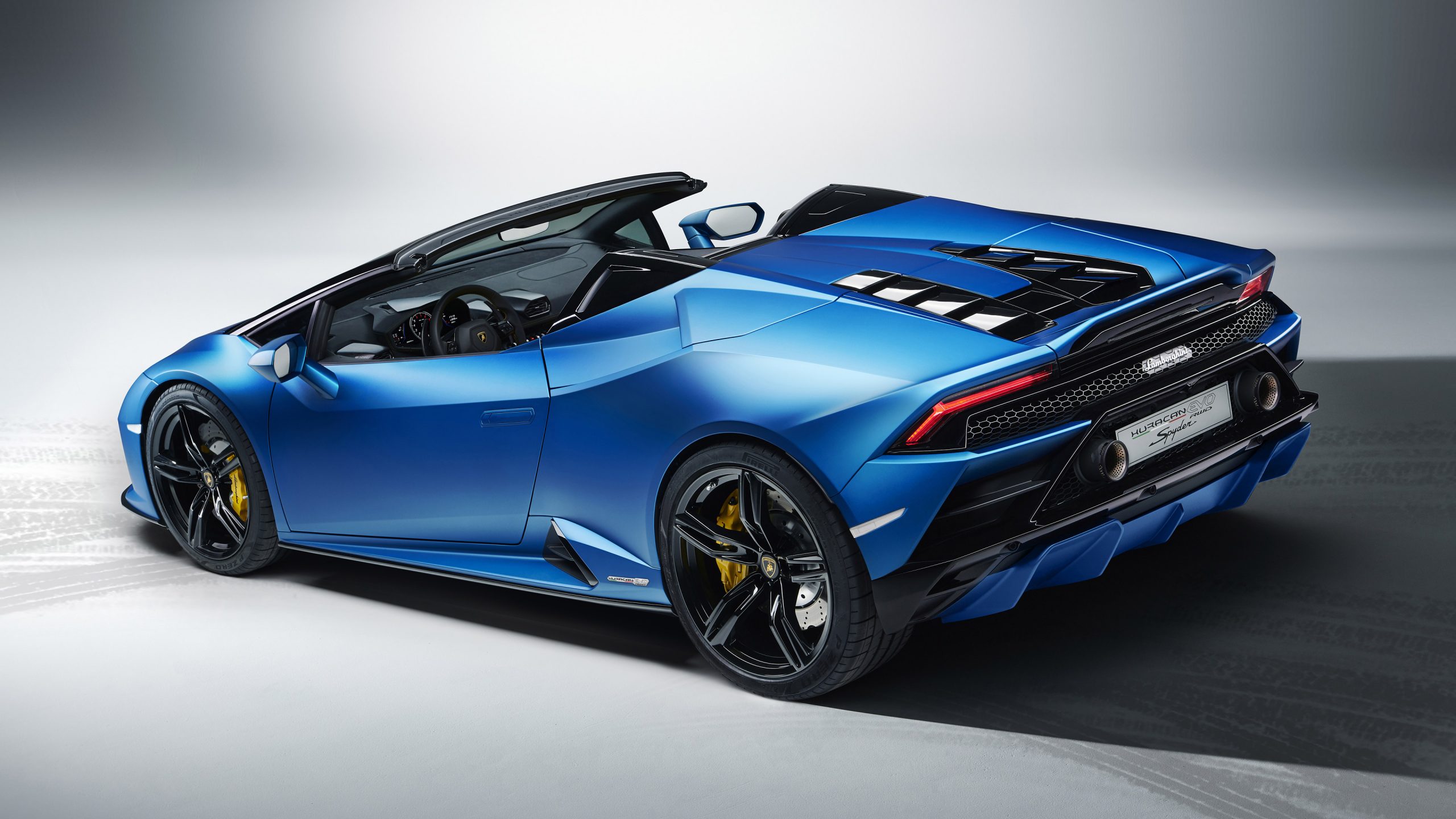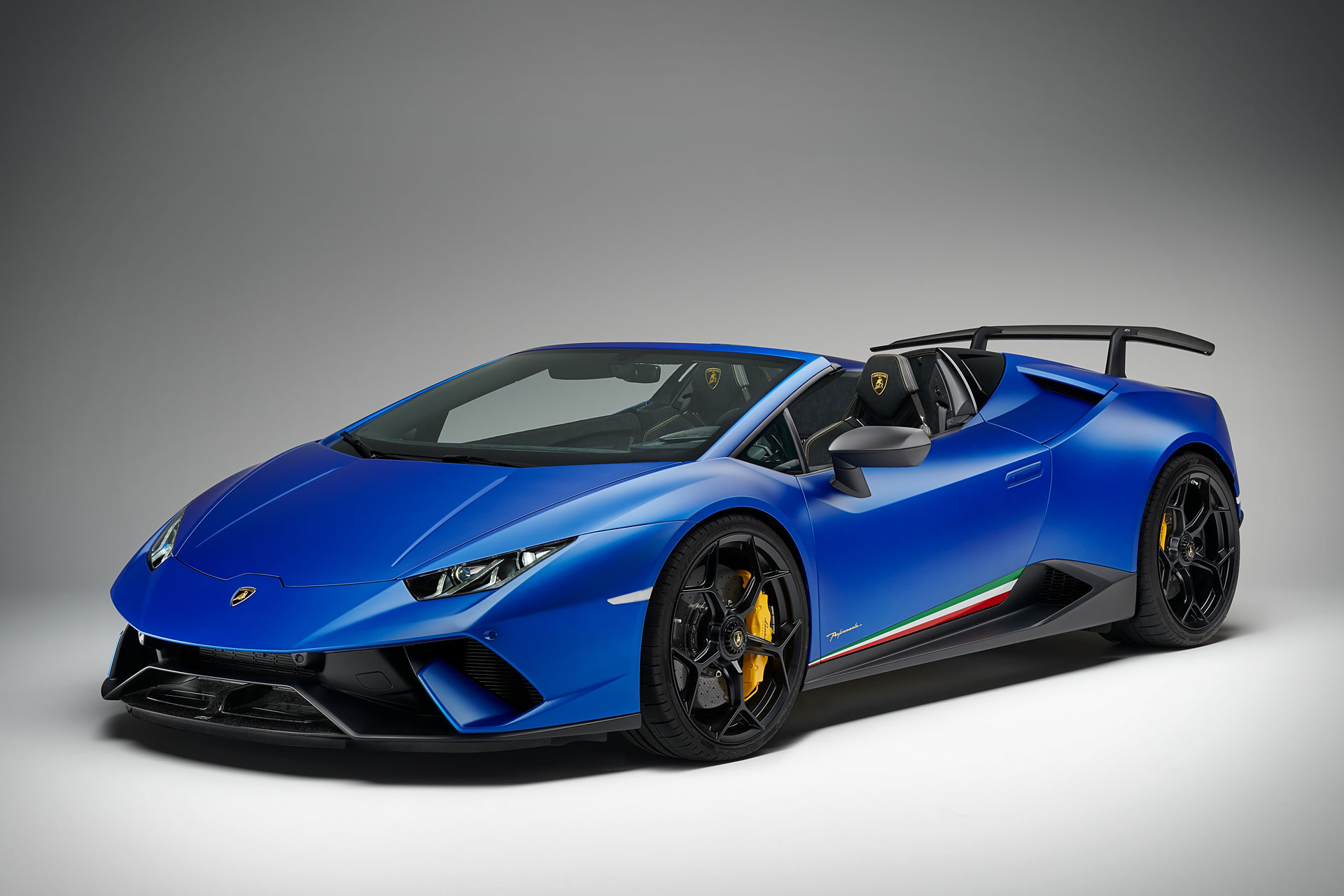
While each provides the Huracán with a distinct character, it would have been nice to see a customizable option like the “Ego” mode found on the Aventador. That’s much less of an issue out on public roads, though, and the rear-steering reduces the car’s turning radius to a noticeable degree, making it easier to thread the Huracán through tight spots, be they mountain switchbacks or busy parking lots.Īs with all Huracán models the Evo Spyder features three different driving modes – Strada, Sport, and Corsa – which are accessible by way of a toggle switch on the steering wheel. Bradley Iger/Digital Trendsīlasting around Willow Springs in the coupe earlier this year, we had to recalibrate our inputs around the Evo’s new four-wheel steering system, as its eagerness to change direction made the car feel a bit nervous and darty at times.
#Lamborghini spyder drivers
While most drivers probably won’t get a whole lot out of Lamborghini’s trick new predictive traction and stability control systems that comprise Lamborghini Dinamica Veicolo Integrata (LDVI) out on public roads, we discovered that some other dynamic tweaks yielded greater benefits in everyday use than they do on the race track.

Behind The WheelĮnhancing the standard Huracán’s handling performance was another key focus of the Evo overhaul. While less precise than a traditional knob, we acclimated to it fairly quickly, though it’s worth noting that the stereo is no match for the engine’s siren song when the top is down anyway. Swiping up or down on the screen with two fingers, for instance, will adjust the volume from any menu screen without missing a beat. As we mentioned in our first drive of the coupe, the lack of a physical volume knob is a frustrating omission, but the system’s fast response, sharp graphics, and genuinely useful gesture controls ultimately make up for a lot. The changes inside are less obvious, but the new vertically-oriented 8.4-inch touchscreen infotainment system housed in the center stack is a welcome addition. From an aesthetic standpoint it amounts to the most angular Huracán yet, and the Spyder adds a pair of vertical fins situated just behind the seatbacks which taper downward toward the engine cover to give the car’s shape more continuity. Highlights include a heavily revised front fascia and splitter as well as a new integrated rear spoiler, tweaks which Lamborghini says provide more than five times the downforce and aerodynamic efficiency of the outgoing model. Like the coupe, the Evo Spyder benefits from an array of aerodynamic enhancements versus its LP610-4 Spyder predecessor. Rear steering reduces the Huracán’s turning radius to a tangible degree, making it easier to thread through tight spots. One of the inherent benefits of topless sports cars is the unencumbered connection between your ears and the engine’s soundtrack, and that highlights several of the Evo Spyder’s strengths.

It takes just 17 seconds to stow the Evo Spyder’s soft top, which can be performed at speeds of up to 31 mph, and it’s a task well worth performing whenever the situation allows.

And to that end, the Huracán Evo Spyder may just be the most distilled supercar experience on sale today. That means these cars need to truly shine out on the street, where they will spend the vast majority of their days. Truth is, the allure of Lamborghini road cars has always been more about making a statement than cutting fast lap times. How did this Lamborghini Huracan end up ‘parked’ beneath a Honda Civic?įor as capable as it is on a road course, many a Huracán will never see a moment of track time throughout its life span.
#Lamborghini spyder full
200-mph Lamborghini Huracan Evo gets full Amazon Alexa integrationĢ020 Lamborghini Huracán Evo Spyder revealed ahead of 2019 Geneva Motor Show


 0 kommentar(er)
0 kommentar(er)
